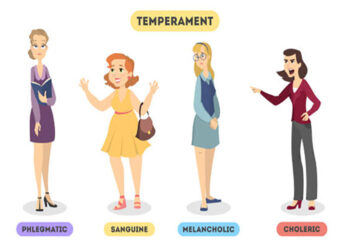
On the 12th of September 1978, the World Health Organization (WHO) in a joint conference with the United Nations Children’s Fund (UNICEF) in Alma-Ata, Russia, outlined a set of objectives and plans for achieving health care for all people in the world. This was known as the Declaration of Alma-Ata, which defined Primary Health Care and outlined 13 components of primary health care.
The Alma-Ata Conference brought together 134 countries and 67 international organizations which defined and granted international recognition to the concept of primary health care (PHC) as a strategy for reaching the millennium goal of Health for All in 2000.
What is Primary Health Care (PHC)?
According to the Declaration of Alma Ata, primary health care, is “essential health care based on practical, scientifically sound and socially acceptable methods and technology made universally accessible to individuals and families in the community through their full participation and at a cost that the community and country can afford to maintain at every stage of their development in the spirit of self-reliance and self-determination”[1]Primary Health Care: 25 Years of the Alma-Ata Declaration –Paho.org.
This definition of PHC encompasses a sustainable healthcare system that is based on acceptable and sound methods and technology. PHC is a whole-of-society approach to health that aims at ensuring the highest possible level of health and well-being and their equitable distribution by focusing on people’s needs, as early as possible along the continuum from health promotion and disease prevention to treatment, rehabilitation, and palliative care, and as close as feasible to people’s everyday environment[2]Primary health care – WHO.
What are the components of primary health care?
There are 13 components of primary health care. These are:
- Health education.
- Immunization against the major communicable diseases.
- Prevention and control of locally endemic diseases.
- Maternal and child health care, including family planning.
- Adequate supply of safe water, and basic sanitation.
- Promotion of food supply and proper nutrition.
- Provision of essential drugs.
- Appropriate treatment of common diseases and injuries.
- Prevention and control of non-communicable diseases.
- Primary mental health.
- Primary dental health.
- Primary eye care.
- Primary geriatric care.
Health Education
This involves educating the populace concerning prevailing health problems, their identification, prevention, and methods of controlling them. Health education is critical to the achievement of health because once the population is educated about health problems, they are more equipped to prevent them, control them, as well as to make informed decisions concerning seeking health services.
Health education involves several media of communication including health talks, lectures, group discussions, buzz groups, demonstrations, role-play, drama, traditional means of communication, and mass media.
Immunization against the major communicable diseases
Immunization remains central to the prevention of vaccine-preventable diseases. Many morbidity and mortality globally result from vaccine-preventable diseases, hence, such illnesses and deaths can best be prevented by instituting effective immunization programs in all countries, with antigens of major communicable diseases.
Since the Alma-Ata declaration, many countries have developed routine immunization programs for children and other susceptible groups. Some common vaccine-preventable infections covered in these programs include tuberculosis, polio, yellow fever, diphtheria, tetanus, etc. Polio, yellow fever, and diphtheria have been very much controlled through immunization, and polio has been declared eradicated in almost all countries of the world.
Prevention and control of locally endemic diseases
Endemic diseases are diseases that affect more than ten percent of the population. Locally endemic diseases are oftentimes restricted to a small subset of a population that is exposed to the same predisposing factors. For example, goiter is endemic in highlands areas with low soil levels of iodine, dengue fever, Lassa fever, ebola, and malaria, which are other common endemic diseases known.
Prevention and control of locally endemic diseases involve the use of prophylaxis, vector control, and effective therapeutic drugs for sick individuals and the community. An example is the provision of effective antimalarial medications for malaria-endemic regions.
Maternal and child health care, including family planning
Maternal health care is closely related to child care because the health of mothers can affect the health of their children and vice-versa. Maternal and child health care are an important index of any country’s health system and must be prioritized to reduce maternal and child mortality which is prevalent in many developing countries.
Family planning is a subset of maternal and child health care that also needs to be emphasized. This is because family planning services affect the health of women and their children even those yet unborn. These services include birth control, antenatal care, safe delivery, and postnatal care, including fertility services.
Adequate supply of safe water, and basic sanitation
This component of primary health care is involved in preventing water-related diseases and diseases related to environmental hygiene. These diseases include cholera, typhoid, diarrhea diseases, scabies, trachoma, guinea worm, schistosomiasis, etcetera.
By prioritizing the provision of safe drinkable and usable water, and basic sanitation services, many common diseases can be prevented and health promoted. It also aims to equip communities with the necessary knowledge, tools, and access to clean and safe water.
Promotion of food supply and proper nutrition
Proper food and nutrition is one of the major pillars of health. Adequate nutrition helps with the growth, development, and development of the immune system against infections and diseases.
Malnutrition, including marasmus and kwashiorkor, is one of the topmost childhood killer diseases, including others like diarrhea, malaria, and measles. By ensuring that communities have access to nourishing food, these deaths by nutritional diseases can be prevented, as well as enhance the body’s immune resistance against other diseases.
Provision of essential drugs
Essential drugs are those that are needed for the treatment of common illnesses and diseases. Endemic diseases are often localized to some communities while others are spared. Some countries have a higher prevalence of some diseases than others, and this is where the concept of essential medicine comes into play.
Under this component of primary health care, countries are encouraged to develop their essential medicine list to cover diseases that are common within the country. This list may be different from those of other countries that have a predominance of other kinds of diseases, but the provision of essential drugs can universally forestall deaths from common diseases and promote health for all.
One intervention that was proposed is the concept of a drug revolving fund where an amount of money is set aside for the procurement and sale of drugs while the profits are put back into the acquisition of more drugs and in more quantities.
Appropriate treatment of common diseases and injuries
A functional healthcare system should be able to provide appropriate treatment for common diseases and injuries. This involves the provision of essential drugs, adequate facilities, and well-trained health workers. To be able to bridge the gap in healthcare, individuals, communities, and the government should prioritize training and provision of equipment and drugs that aid the treatment of common diseases and injuries.
Prevention and control of non-communicable diseases
Non-communicable diseases like diabetes, hypertension, cancer, and arthritis, are not transmissible from person to person but they pose a significant challenge to health care. Primary health care aims to proffer solutions to these conditions by educating individuals on prevention and providing treatment for those who already have these diseases.
Primary mental health
Health is the complete state of physical, mental, and social well-being of an individual and not necessarily in the absence of disease or infirmity[3]Constitution of the World Health Organization – WHO. This primary health care objective is to ensure that the mental aspect of health is catered for as well as the others.
Primary dental health
This is a new inclusion to the components of primary health care (PHC), and it involves the provision of dental health services to individuals and communities at a cost that they can afford to maintain.
Primary eye care
Eye conditions are prevalent in most parts of the world. They are often related to aging or other infectious and non-communicable diseases. This component of PHC was also recently included, to cater to all individuals with eye problems or who need primary eye care.
Primary geriatric care
This component of PHC was also recently included in the original Alma-Ata conference objectives, and it includes the provision of healthcare services to old people. This includes the provision and maintenance of old people’s homes and geriatric health clinics. This is particularly important because old people have special health conditions that need special attention.
These components of primary healthcare play a role in the attainment of universal healthcare and are designed to enhance access to healthcare regardless of people’s financial status or region. For these to be efficiently achieved, the Alma-Ata declaration also established some principles of primary health care to stand as the pivot in the attainment of the goals.
Principles of Primary Health Care (PHC)
The principles of PHC are geared towards sensitizing the public, government, and individuals on their collective input to make universal health a reality in all countries. There are five principles of PHC as follows:
- Political will: The goals and components of PHC will not be accomplished if the government of the day is not motivated to make them work.
- Equitable distribution of resources: Equitable distribution of resources ensures that every community or state has adequate resources that meet their population needs. It doesn’t have to be equal but it has to be equitable.
- Community participation: PHC aims at achieving healthcare for all irrespective of age, sex, and financial capacity. For this to be realized, the input of everyone needs to be welcome and appreciated.
- Intersectoral participation: Insectorial participation or collaboration entails developing a mutual relationship between different sectors in the provision of primary healthcare. For example, the agricultural sector can be involved to fulfill the component of the promotion of food supply and proper nutrition.
- Appropriate technology: The role of technology cannot be overemphasized in the attainment of the various components of PHC, hence, its inclusion into the principles of primary health care.
Final words
Primary Healthcare is essential health care based on practical, scientifically sound, and socially acceptable methods and technology made universally accessible to individuals and families in the community at a cost that the community and country can afford to maintain at every stage of their development.
Primary healthcare and its components were established by the Alma-Ata Declaration. The aim of PHC is to provide universal healthcare to all. The principles of PHC were developed side-by-side for the achievement of its goals and components.
References
| ↑1 | Primary Health Care: 25 Years of the Alma-Ata Declaration –Paho.org |
|---|---|
| ↑2 | Primary health care – WHO |
| ↑3 | Constitution of the World Health Organization – WHO |

















That’s my doctor there